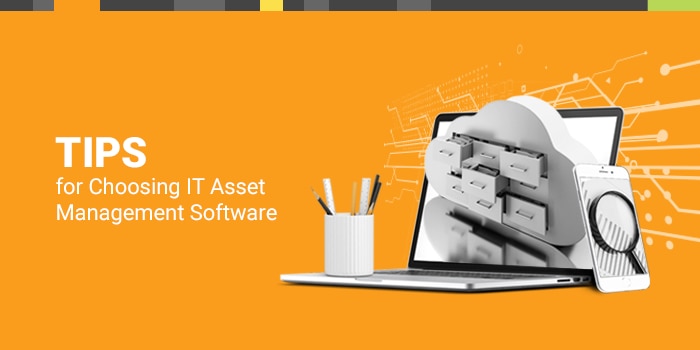Depending on the business, there’s a myriad of IT assets to keep track of and doing it manually can be taxing. An IT asset management system allows IT pros to monitor all the hardware and software introduced into the business and when those assets exit. When a service desk has details on each IT asset, where it resides, and its owner, IT pros can provide continuity of service and better manage service costs.
Types of IT Assets
IT assets can be physical, digital, software, and in the cloud. They include but aren’t limited to:
- Computers/laptops
- Mobile devices
- Routers
- Scanners
- Servers
- Software applications/licenses
- Printers/fax machines
- Virtual machines
The IT Asset Management Lifecycle
Managing the IT asset management (ITAM) lifecycle helps ensure the performance and reliability of IT assets. A view into the lifecycle of hardware and software helps IT pros make necessary decisions for IT systems when businesses need to explore budget considerations, there’s a new release with an impact on devices, or when support tickets or incidents arise.
With IT asset management tools fully integrated into the service desk, there’s no longer a need to manually track details of assets, like versions of software or model numbers of hardware. In the case of repetitive incidents, ITAM gives technicians visibility into the historical data of an asset—which allows them to better diagnose the issue and perform root-cause analysis. Depending on the incident, IT pros can decide whether they believe it’s worth it to fix the issue or retire the asset out of the business.
Addressing Business Challenges With IT Asset Management
Change is happening rapidly for businesses, and they need to be able to keep up with the needs and demands of employees. Between mergers and acquisitions and expansions or downsizing, these changes have an impact on IT inventory, making hardware and software asset management a moving target.
Businesses are also not in one single location anymore. If it’s a global enterprise, there can be dozens of locations across the world. With IT assets housed at so many different locations, it can become harder to manually monitor changes or additions to the environment, such as when an employee installs a new software application on their laptop or when a new scanner or printer is connected to a network. As a result, IT asset inventory logs can quickly become outdated.
A comprehensive, fully automated IT asset management solution addresses these challenges. It can help organizations keep their technology up-to-date and balanced, even in the face of rapidly changing and increasingly hybrid IT infrastructures. With IT asset management systems in place, businesses can achieve complete, real-time visibility across their entire technology landscape, knowing exactly what they have, where it’s located, and how it’s being used.
Benefits of IT Asset Management
IT asset management helps IT pros discover the root causes of repetitive incidents and problems by finding connections between assets through the data. With an asset management program, your business will be better equipped to:
- Manage asset and license compliance
- Minimize unnecessary spending
- Keep employees aware of impacted assets
- Redeploy IT assets quicker
- Manage contract service levels
- Automate contract renewal
- Improve budgeting
- Better understand tickets submitted by employees
With an IT asset management solution in place, organizations can readily identify which applications are being used and which ones aren’t. By getting rid of idle ones, companies can avoid unnecessary costs for maintenance by canceling in advance of contract or license renewals.
By using an automated tool to maintain an up-to-date inventory of all software assets, companies can stay fully aware of what they already own and reduce hidden software costs.
Automated discovery is an important part of ITAM because it’s how you identify IT assets. Once a new asset is introduced into the business, an asset discovery tool (agent or agentless) scans it and continuously tracks its lifecycle.
- Agent discovery—Tools using agents require little infrastructure to set up as they’re simply installed on the device and can be tracked anywhere, as long as they can connect to the internet. A great option for global enterprises.
- Agentless discovery—Not all devices allow for agent-based installation, so for devices like routers and switches, agentless discovery may be ideal. When it comes to upgrades, an agentless system is much faster.
How to Choose the Right IT Asset Management Software
Choosing the right
IT asset management software means first identifying your organization’s goals. Most organizations aim to:
- Obtain IT assets with the most effective cost and benefit to the business
- Dispose of IT assets that are no longer useful or have exceeded their lifecycle
- Collect data for regulatory compliance and contract/license renewal
Keeping these uses in mind can help you choose software with the features, usability, and functionality to help reach these goals.








